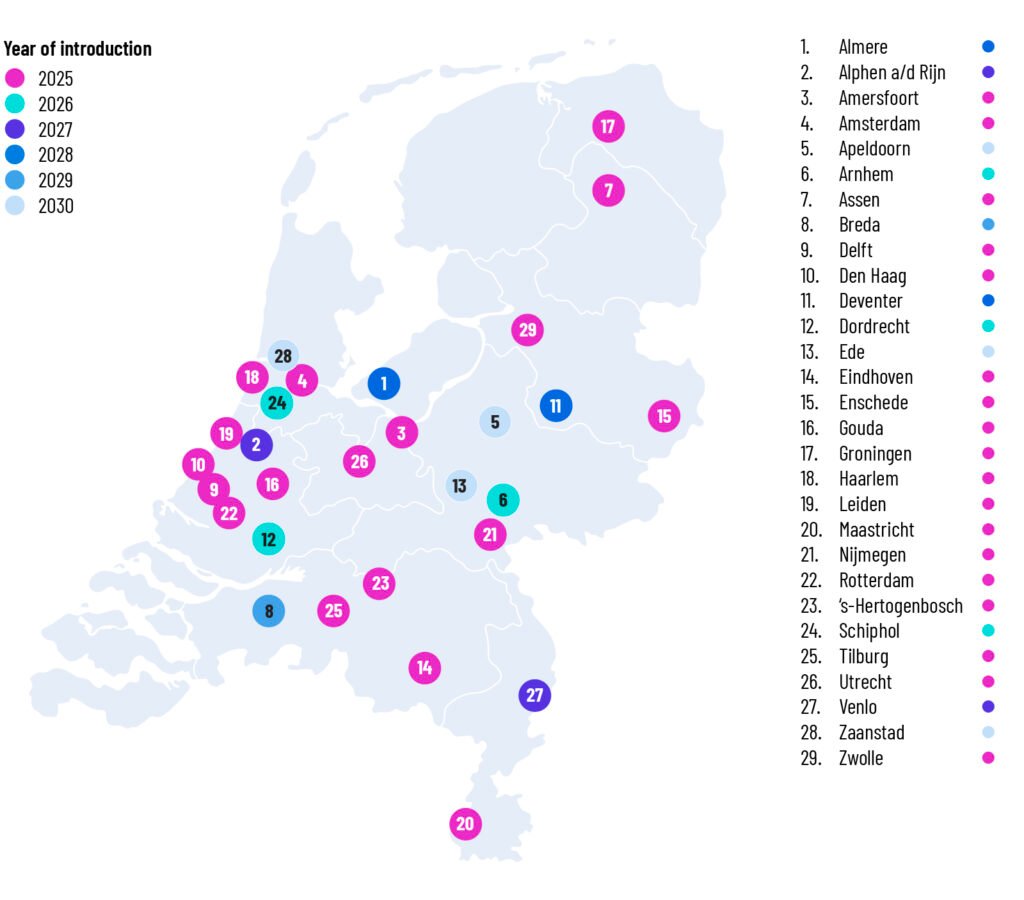The rise of electric
vans and trucks:
Early evidence from Dutch
zero-emission zones for freight
Freight keeps our cities moving, but it comes at a cost: emissions, noise, and congestion.
In 2025, the Netherlands took a bold step to address this by introducing 18 zero-emission zones for freight (ZEZ-Fs), with plans to expand to 29 municipalities by 2030.
Early data shows these zones are already driving a rapid shift to electric vans and trucks, offering a blueprint for cleaner, quieter, and healthier urban freight across Europe.
key findings
The Netherlands is leading Europe
in electrifying freight
In the first half of 2025, 78.4% of newly registered vans in the Netherlands were battery-electric - far above the EU average of 8.5%.
Electric truck registrations rose by 187.6% year-on-year, representing a quarter of all new electric trucks sold in the EU, compared with EU-wide growth of 46.1%.
Neighbouring municipalities
also benefit
Even cities neighboring ZEZ-Fs see faster uptake of electric vans, reaching an average of 2.9%. This “spill-over” effect suggests that clear policy can influence broader regional adoption.
ZEZ-F municipalities are accelerating change
Cities that have committed to zero-emission zones for freight (ZEZ-F) by 2030 already show faster adoption of electric vans.
By January 2025, these municipalities averaged 6.1% electric vans, compared to 1.7% in municipalities without ZEZ-F plans. Early trucks data shows a similar trend.
Businesses are responding
to ZEZ-Fs
Company strategies confirm the zones’ impact. Operators cite ZEZ-Fs as a key driver for switching to emissions-free fleets, supported by timelines and proactive engagement that allow businesses to plan their investments.

Policy Recommendations
- Cities should provide clear, long-term signals and support for businesses. This includes announcing ZEZ-Fs early, phasing requirements for existing fleets, pairing mandates with financial incentives and practical guidance, standardising rules locally, and expanding charging infrastructure.
- National governments should harmonise frameworks and ensure predictable incentives. They can establish consistent national rules, central exemptions, and standardised enforcement, provide subsidies and tax benefits for electric vehicles while phasing out diesel support, and plan grid capacity to meet growing demand.
- The EU should set ambitious standards and create market scale. This means maintaining strong, predictable CO₂ targets for vans and trucks, introducing green fleet mandates for public and large private operators, and enabling cross-border enforcement to ensure compliance.
Where are the zones?
Cities in the Netherlands have the authority to introduce zero-emission zones for freight (ZEZ-Fs) through a traffic decree, which must be adopted at least four years before the zone takes effect.
On the map below you can see all of the existing and planned zero-emission zones for freight in the Netherlands.

Download the full briefing
Get the complete Clean Cities analysis of ZEZ-F impact in the Netherlands 👇